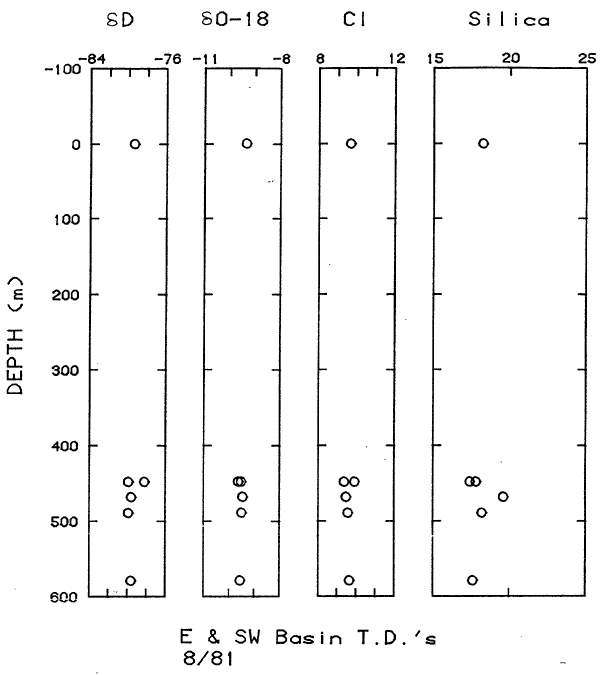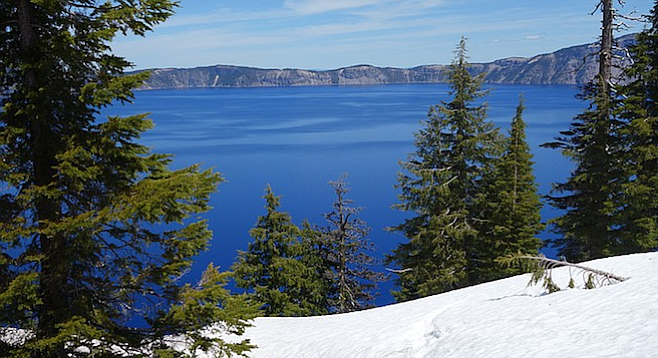Comparing Crater Lake water to other cold-spring waters and to Diamond Lake water, a lake about 20 km (12 miles) north of Crater Lake and 300 m (1000 ft) lower in elevation, Crater Lake has higher Cl, S04, HCO3, Ca, Mg, Na, Li, and B concentrations (table la and lb). Crater Lake, at such a high elevation, should contain either less chloride than a typical lower elevation lake and nearby cold springs or a similar chloride, but not more. Both lakes are significantly lower in dissolved SiO2 than surrounding cold-spring waters. For Diamond Lake, which is quite a productive lake, this is probably a result of diatom metabolism. For Crater Lake, diatoms also consume silica, but its silica concentration is actually anomalously high. The inflow of spring and ground water measured by Phillips (1968) is 15 percent of the total inflow to Crater Lake. Precipitation carries negligible silica whereas the cold springs above Crater Lake carry about 35 mg/L. Using the assumptions in Phillips (1968), the inflow from the cold springs would yield a silica concentration of only 7.5 mg/L in Crater Lake whereas the measured concentration is 18 mg/L. This extra silica must be provided by the same inflow that supplies the added chloride and sodium calculated by Nathenson (1987, written communication).
The anomalous constituents in Crater Lake led Van Denburgh (1968) to the interpretation that the enrichment of Cl and SO4, and perhaps SiO2 and Na, “… may have been contributed to the lake by thermal springs or fumaroles …” This suggestion, which is supported by the heat flow data of Williams and Von Herzen (1983), has caused much controversy. However, if the interpretation of Williams and Von Herzen’s heat flow data is correct, it provides a mechanism for the relatively uniform chemical and isotopic composition of the lake, namely Rayleigh convection. They reported a Rayleigh number of 6.3 x 1014, whereas 1000 is sufficient to initiate convection.
 |
| Table la. Chemical Analyses of Springs in the Vicinity of Mount Mazama |
 |
| Table 1b. |
 |
| Figure 5. Isotope and chemical data for Crater Lake for surface and total depth samples in 1981 in the east and southwest basins. |


